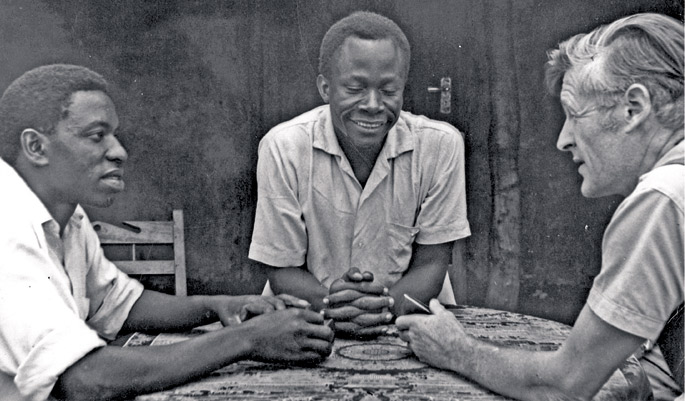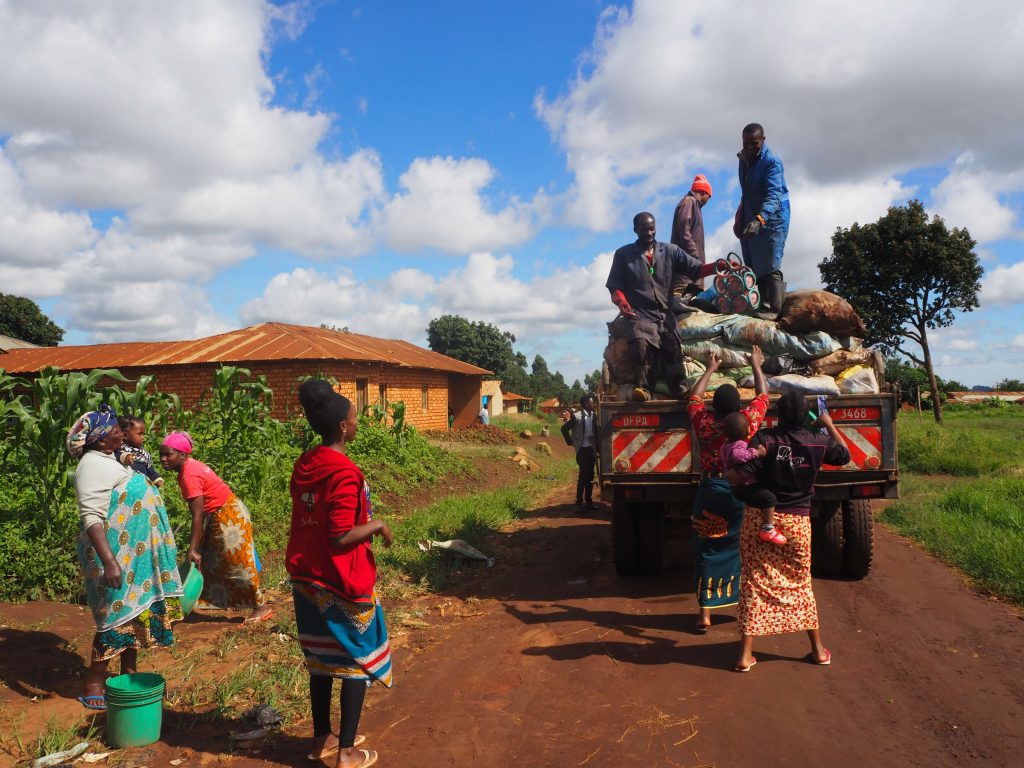'Ujamaa', an almost forgotten socialism of the small Tanzanian villages
- The father of the liberation of Tanzania and the precursor of decolonized Africa, Julius Nyerere, claimed socialism at African roots, formed by small self-managed peoples, equal between men and women... The model, which flourished in the Ruvuma region in the 1960s, was drowned by the leaders of the Nyere party, but remains attractive in half a century.

For forty years Ralph Ibbott has left on the shelf the manuscript of the book “Ujamaa, the hidden story of Tanzania’s socialist villages”. The husbands Ralph and Maureen, who are now about to turn 90, work silently in the small RUDA Tanzania partnership in Scotland, but don't forget it.
Selma James approached them by asking them about Tanzania. In the feminist struggle, James is known as the leader of the Global Women’s Strike. Fascinated by what the Ibott told him about his experience, James has published the book with his own prologue.
The older readers of ARGIA will remember Julius Nyerere, one of the great leaders who wanted to decolonize Africa, with a program full of activities. In 1962, he managed to get what was until then Tanganika to be called Tanzania, proclaiming a society that functioned outside capitalism, like many other liberating leaders in that decade.
In his childhood he knew the communal work in his tribe, and Nyerere called the socialism of the African spirit, which in Swahili means kinship or familiarity. Although many of the leftists believed that the life of the old villages was an obsolescence to be overcome, for Nye most citizens could take advantage of the old communalism of their countries of origin, adapted to modern needs, to avoid capitalism.
To build African socialism, which would work without money, rooted in the ancient land and culture, egalitarian, Nyerere envisaged two major problems. First, the dependence on women: “It is undeniable that even today women are working more in the camps and in the houses than they are. They suffer inequalities by their own sex that have nothing to do with the wealth they bring to families.” The boss reported that men, with women at work, spent half the day idle.
The second hurdle to overcome was the old-fashioned way of cultivating land, and he considered that with the modernization of agriculture Tanzania could make a big leap in development. He came to help Tanzania from Rhodesia – today driven out by the apartheid regime from Zimbabwe – with his wife and two sons Ralph Ibbott, who learned the administration of the caserades in 1963.
In the village of Litowa, in the region of Ruvuma, Ibbott already found the ujama in motion. Ntimbanjayo Millinga and 14 other young people had been trying for three years to put into practice what Nyerere said: self-managed peoples as cooperatives trying to make decisions with more consensus than by voting. Ibbott would accompany them as an advisor for the next six years, but being a white foreigner, without a vote and without being able to decide on the matter.
They organized the Association for the Development of Ruvuma (RDA) for the dissemination of the ujama in the region. By 1969, RDA consisted of 17 villages, some of over 80 families. They produced all the necessary food in the village, built their own homes with mud and wood, made tobacco to get money - to buy from abroad -, built schools and health centers, irrigation and fountains to water the fields, sawmills, mills to grind cereals...
Those who wanted to come to settle in the house of some other people, received them in three days of training, then admitted them in six months of testing when they arrived with their families, and in the end, if everything was going well, they gave them a piece of land to build the house.
Auzolana versus bureaucracy
In the introduction of the book, Selma James has highlighted the effort made in the Ujamaa villages of Ruvuma to empower women. They were given the floor at the weekly meeting, taking into account their interests. Household chores and childcare were among the tasks to be distributed weekly in the pueblo.Con tap water was removed from women and children water transportation.
The small amounts of money that the harvest had yielded were equitably distributed and included in the partitions the elders and the invalids, who helped to protect the crops of the herds and to care for the children and the sick of the people.
The infant mortality rate went down a lot. The children of the surrounding villages began to come to Litova's school. Great progress was made in the eradication of domestic violence and in the improvement of the status of women.
So far the experience of the 17 ujamaas of the GDR, narrated by Ibbott. There is also another version of the ujama, the most widespread and that Wikipedia itself counts at the entrance of Julius Nyerere. That is, that Nyerere forced small towns to meet in new villages, 20 million people in the 1970s, and this experience called in English villagization was a great economic and humanitarian failure, in addition to hunger, plunging Tanzania into poverty.
The truth is that Tanzania has experienced two very different experiences, united with each other, as Ralph Ibbott's book shows. The thread of the first 17 self-managed peoples, of which the GDR was collecting in the Ruvuma region of Tanzania, was interrupted in 1969 by the unilateral direction TANU. And then, by the same name, the centralized, homogeneous system put in place by the authorities was something completely different.
In 1969, the Ibbott family had to leave Tanzania. He worked as a social worker in the poor neighborhood of Glasgown Greenock, in Scotland, trying to apply in a degraded urban environment what he had lived in the ujama system. He always held a discreet relationship with Millinga and other colleagues from Ruvuma so as not to harm them. And Glasgow continues to work with a small support group, called RUDA Tanzania, to fund projects in schools, agriculture, etc.
According to Ralph Ibbott, Nyerere always proclaimed that the 17 GDR villages were the model of African socialism, but the TANU elite considered them dangerous, many members of the central committee began to accumulate wealth and power: egalitarian Ujamas were laborious models. On the other hand, hidden commissions and tips were not working in the cooperatives, while in the TANU corruption was spreading.
As on many other occasions, the officials of the Grand Party apparatus, the owners of the idea, baptized the ujama, a centralized operation precisely in the opposite direction. Forgetting the experience of self-management would have covered him forever if Ralph Ibbott's testimony had not been disseminated through the Internet.
Pobreziari eta honek eragiten dien bazterkeriari aurre egiteko, Ghana iparraldean emakumeek beren banku-kooperatiba sortu dute. IPS gunean Albert Oppong-Ansah-k idatzi duenez, auzolan ekonomiko honi esker, bestela inolako ziurtasun ekonomikorik ez zuten familiek elkar... [+]














